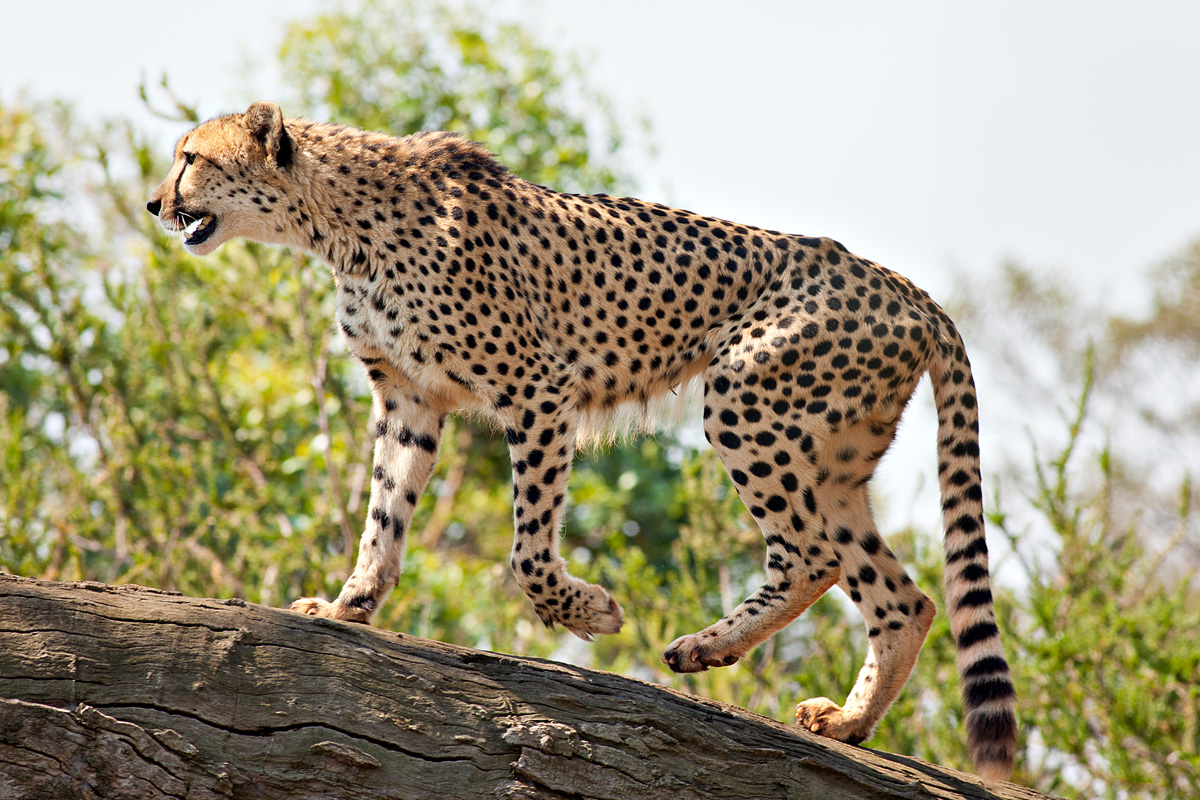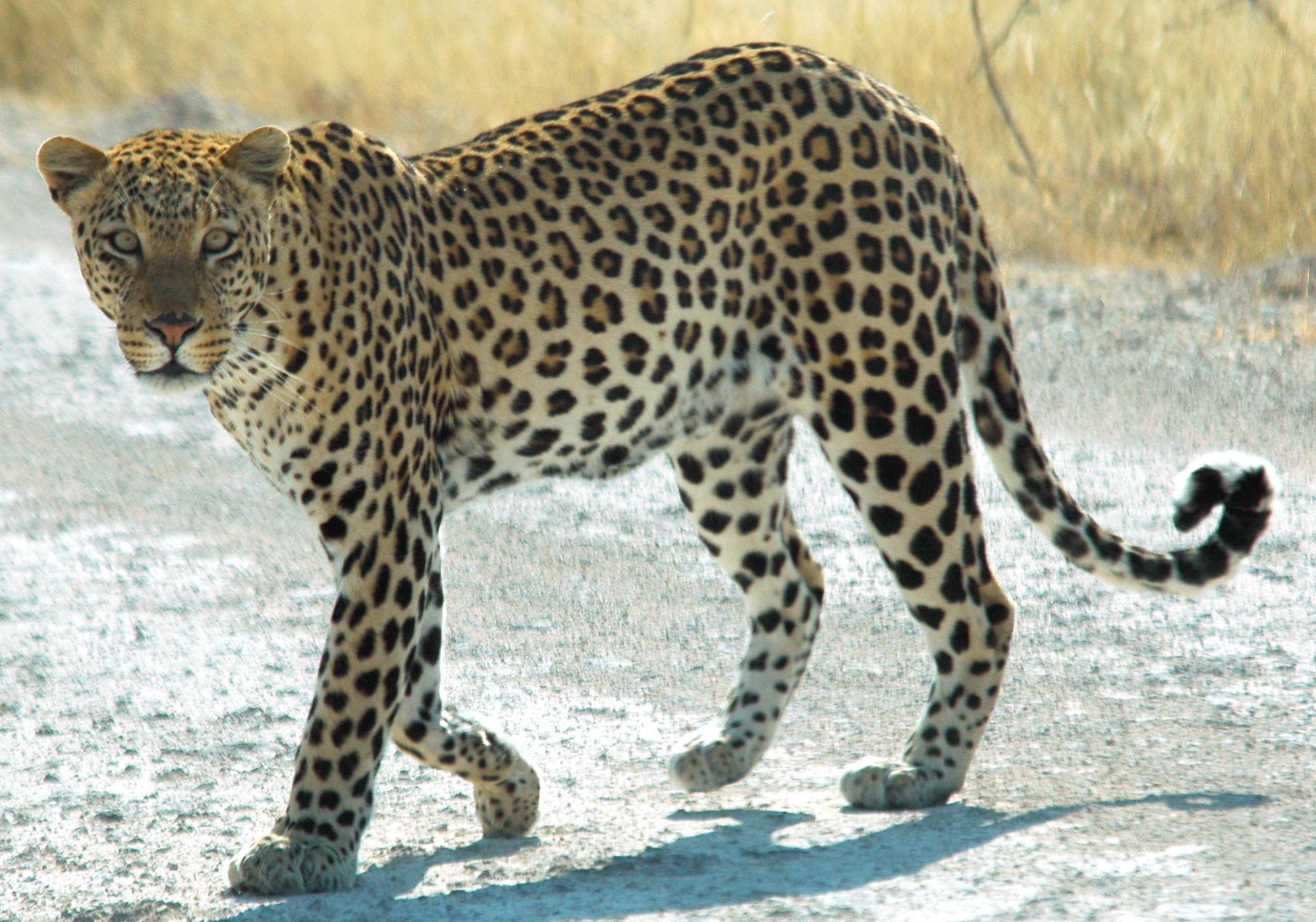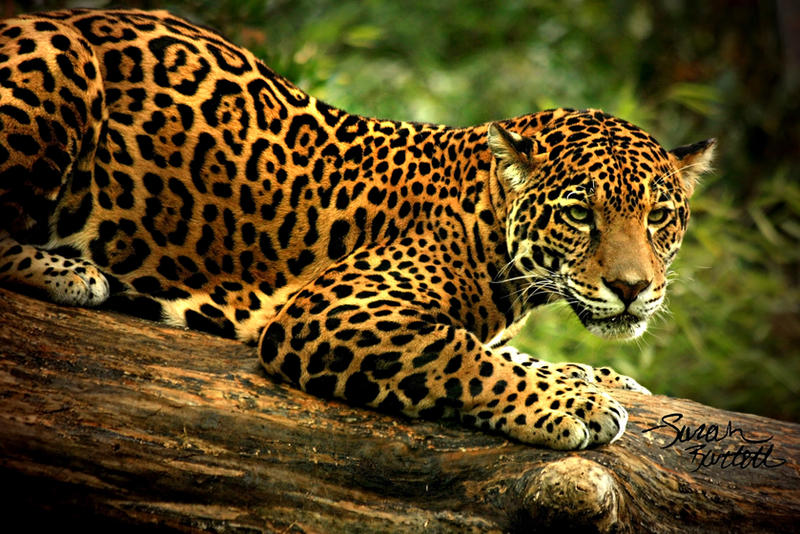Scientific Name: Felis catus
Body size: 0.75 meters
Body weight: 4.5 kilograms
The typical house cat sleeps about 16 hours per day. The word 'catnapping' obviously comes from this statistic. A cat's brain stays aware of sounds and danger during sleep.
Typical house cats' backbones are connected by muscle, not ligaments like humans. This makes cats superior in flexibility. When a cat stretches, he is really toning muscle comparative to humans performing isometric exercises.
Experts traditionally thought that the Egyptians were the first to domesticate the cat, some 3,600 years ago. But recent genetic and archaeological discoveries indicate that cat domestication began in the Fertile Crescent, perhaps around 10,000 years ago, when agriculture was getting under way.
Some notable people who disliked cats: Napoleon Bonaparte, Dwight D. Eisenhower, Adolf Hitler, Justin Bieber.
Cats lived with soldiers in trenches, where they killed mice during World War I.

9. Serval
Scientific Name: Leptailurus serval
Body size: 0.8 meters
Body weight: 13.5 kilograms
It is also known in Afrikaans as Tierboskat, "tiger-forest-cat" is a medium-sized African wild cat.
There are 19 subspecies of servals.
The serval is nocturnal, and so hunts mostly at night, unless disturbed by human activity or the presence of larger nocturnal predators. Although the serval is specialized for catching rodents, it is an opportunistic predator whose diet also includes birds, hares, hyraxes, reptiles, insects, fish, and frogs.
Like many cats, the serval is able to purr. The serval also has a high-pitched chirp, and can hiss, cackle, growl, grunt, and meow.
Life expectancy is about 10 years in the wild, and up to 20 years in captivity.

Scientific Name: Leopardus pardalis
Body size: 1.1 meters
Body weight: 13.5 kilograms
The ocelot also known as the dwarf leopard.
The ocelot is similar in appearance to a domestic cat. Its fur resembles that of a clouded leopard or jaguar and was once regarded as particularly valuable. As a result, hundreds of thousands of ocelots were once killed for their fur. The feline was classified a "vulnerable" endangered species from 1972 until 1996, and is now rated "least concern" by the 2008 IUCN Red List.
The ocelot is mostly nocturnal and very territorial. It will fight fiercely, sometimes to the death, in territorial disputes.
Ocelots hunt over a range of 18 km2 (6.9 sq mi), taking mostly small animals, including mammals, lizards, turtles, and frogs, crabs, birds, and fish. Studies suggest that it follows and finds prey via odor trails, but the ocelot also has very good vision, including night vision.
Ocelots live for up to 20 years in captivity.
Ocelots only inhabit areas with relatively dense vegetation cover, although they may occasionally hunt in more open areas at night. They are found in tropical forest, thorn forest, mangrove swamps and savanna, at elevations ranging up to 1,200 meters (3,900 ft).
Scientific Name: Lynx lynx
Body size: 1.2 meters
Body weight: 30 kilograms
It is also known as the European lynx, common lynx, the northern lynx, and the Siberian or Russian lynx.
They have been observed to mew, hiss, growl, and purr, and, like domestic cats, will "chatter" at prey that is just out of reach. Mating calls are much louder, consisting of deep growls in the male, and loud "meow"-like sounds in the female.
Lynx preys largely on small to fairly large sized mammals and birds. Among the recorded prey items for the species are hares, rabbits, marmots, squirrels, dormice, other rodents, grouse, red foxes, wild boar, foxes, chamois, moose, roe deer, red deer, reindeer and other ungulates.
Lynx was featured in the Soviet postage stamp on 1988.
Scientific Name: Acinonyx jubatus
Body size: 2 meters
Body weight: 46 kilograms
The cheetah is the fastest land animal in the world. They can reach a top speed of around 113 km per hour.
A cheetah can accelerate from 0 to 113 km in just a few seconds.
Cheetahs are extremely fast however they tire quickly and can only keep up their top speed for a few minutes before they are too tired to continue.
Cheetahs are the only big cat that cannot roar. The can purr though and usually purr most loudly when they are grooming or sitting near other cheetahs.
While lions and leopards usually do their hunting at night, cheetahs hunt for food during the day.
A cheetah has amazing eyesight during the day and can spot prey from 5 km away.
Cheetahs cannot climb trees and have poor night vision.
Cheetahs only need to drink once every three to four days.
Scientific Name: Panthera pardus
Body size: 2 meters
Body weight: 63 kilograms
Leopards are well known for their cream and gold spotted fur, but some leopards have black fur with dark spots. These black leopards are often mistaken for panthers.
Adult leopards are solitary animals. Each adult leopard has its own territory where it lives and, although they often share parts of it, they try to avoid one another.
A leopard’s body is built for hunting. They have sleek, powerful bodies and can run at speeds of up to 57 kilometres per hour. They are also excellent swimmers and climbers and can leap and jump long distances.
A leopard’s tail is just about as long as its entire body. This helps it with balance and enables it to make sharp turns quickly.
Leopards are mostly nocturnal, hunting prey at night.
Leopards protect their food from other animals by dragging it high up into the trees. A leopard will often leave their prey up in the tree for days and return only when they are hungry!
Some people believe that the bones and whiskers of leopards can heal sick people. Many leopards are killed each year for their fur and body parts and this is one reason why the leopard is an endangered animal. While they were previously found in the wild in a number of areas around the world, their habitat is largely restricted to sub-Saharan Africa with small numbers also found in India, Pakistan, Malaysia, China and Indochina
Scientific Name: Puma concolor
Body size: 2.27 meters
Body weight: 86 kilograms
Pumas are predators who eat a wide variety of prey where they live including deer, pigs, capybaras, raccoons, armadillos, rabbits, and squirrels.
The puma can kill and drag prey up to seven times its own weight.
The puma can be found from northern Yukon in Canada to the southern Andes. They are found in almost every type of habitat from lowlands to forests.
The Puma holds the Guinness record for the animal with the highest number of names. It has more than 40 names in English.
Kittens or cubs have camouflaging spots and rings around their tails that fade as they mature.
The puma is more closely related to domestic cats than true lions.
Pumas don’t really roar even though they are big cats. They prefer to make a series of sounds similar to whistles, squeaks and purrs.
The puma is the actual logo of the sports brand "Puma" itself.
Scientific Name: Panthera onca
Body size: 2.7 meters
Body weight: 100 kilograms
The jaguar has a compact body, a broad head and powerful jaws. Its coat is normally yellow and tan, but the color can vary from reddish brown to black. The spots on the coat are more solid and black on the head and neck and become larger rosette-shaped patterns along the side and back of the body.
Jaguars are known to eat deer, peccary, crocodiles, snakes, monkeys, deer, sloths, tapirs, turtles, eggs, frogs, fish and anything else it can catch.
The jaguar has become a symbol of power, strength, and beauty.
The jaguar once worshipped as a god, the jaguar's name comes from a native American word meaning “the killer that takes its prey in a single bound.”
Jaguars make a variety of sounds, including roaring, mewing, and grunting. They are excellent swimmers, and they enjoy being in the water.
Scientific Name: Panthera leo
Body size: 3 meters
Body weight: 180 kilograms
The lion is a magnificent animal that appears as a symbol of power, courage and nobility on family crests, coats of arms and national flags in many civilizations.
Lions are found in savannas, grasslands, dense bush and woodlands.
Lion is also known as the "King of the Jungle".
Lions are the laziest of the big cats. They usually spend 16 to 20 hours a day sleeping and resting, devoting the remaining hours to hunting, courting or protecting their territory.
The largest lion was recorded to be nearly 700 pounds and nearly 11 foot long.
The oldest lion on record was nearly 29 years old.
A lion's eyesight is five times better than a human being.
A lion can hear prey from a mile away.
Lions can smell nearby prey and estimate how long it was in the area.
A lion's roar can be heard from five miles away.
When males join a pride, they usually kill other cubs.
Lions can go four days without drinking.
There is less than 50 000 lions in the world today.
The gestation period is about 110 days.
A lion can drink for as long as 20 mins after eating
A male eats first, even if the female catches the prey
Lions rarely eat an entire prey, leaving the rest for other animals such as vultures
The average lifespan is 13 years
Scientific Name: Panthera tigris
Body size: 3 meters
Body weight: 200 kilograms
You can hear a tiger roar over a mile away!
A tiger can eat 100 pounds of meat a night! Compare that to 400 hamburgers! They need a lot of food because they go days between meals.
Tigers have been called man eaters, yet they eat frogs, monkeys, porcupines fowl, and tortoises, especially when a good deer is hard to find.
Tigers have eyes that are the brightest of any other animal in the world. At dusk, or in the beam of a torch, they blaze back the ambient light with awe-inspiring intensity.
They live in steamy hot jungles as well as icy cold forests. There are five different kinds or subspecies of tiger alive in the world today. These tigers are called Siberian, South China, Indochinese, Bengal, and Sumatran. Tigers are an endangered species; only about 5,000 to 7,400 tigers are left in the wild. Three tiger subspecies, the Bali, Javan, and Caspian tigers have become extinct in the past 70 years.
Tigers have round pupils and yellow irises (except for the blue eyes of white tigers). Due to a retinal adaptation that reflects light back to the retina, the night vision of tigers is six times better than that of humans.
Although tigers usually live alone, tiger territories can overlap. A male tiger's territory usually overlaps those of several female tigers.
Tigers mark their territories by spraying bushes and trees with a special mixture of urine and scent gland secretions. They also leave scratch marks on trees.
Tigers can see in the dark six times better than humans can. They can also see in color.
The heaviest tiger recorded in the Guinness Book of World Records is a 1,025-pound male Siberian tiger.
Young tigers live with their mother until they are two to three years old, then they find their own territories.
Unlike some big cats like lions, adult tigers like to live alone (except for mother tigers with cubs). This is partly because in the forest, a single tiger can sneak up and surprise its prey better than a group of tigers can.
Most tigers have an orange coat with dark brown or black stripes accented with white. Tigers that live in cold climates (Siberian tigers) have thicker fur than tigers that live in warm climates.
No one knows exactly why tigers are striped, but scientists think that the stripes act as camouflage, and help tigers hide from their prey. The Sumatran tiger has the most stripes of all the tiger subspecies, and the Siberian tiger has the fewest stripes. Tiger stripes are like human fingerprints; no two tigers have the same pattern of stripes.
A tiger's paw prints are called pug marks.
Like domestic cats, tiger claws are retractable. Tiger scratches on trees serve as territorial markers.
They often carry the Chinese mark of Wang or King on the forehead.
The life span of tigers in the wild is thought to be about 10 years. Tigers in zoos live twice as long.








No comments:
Post a Comment